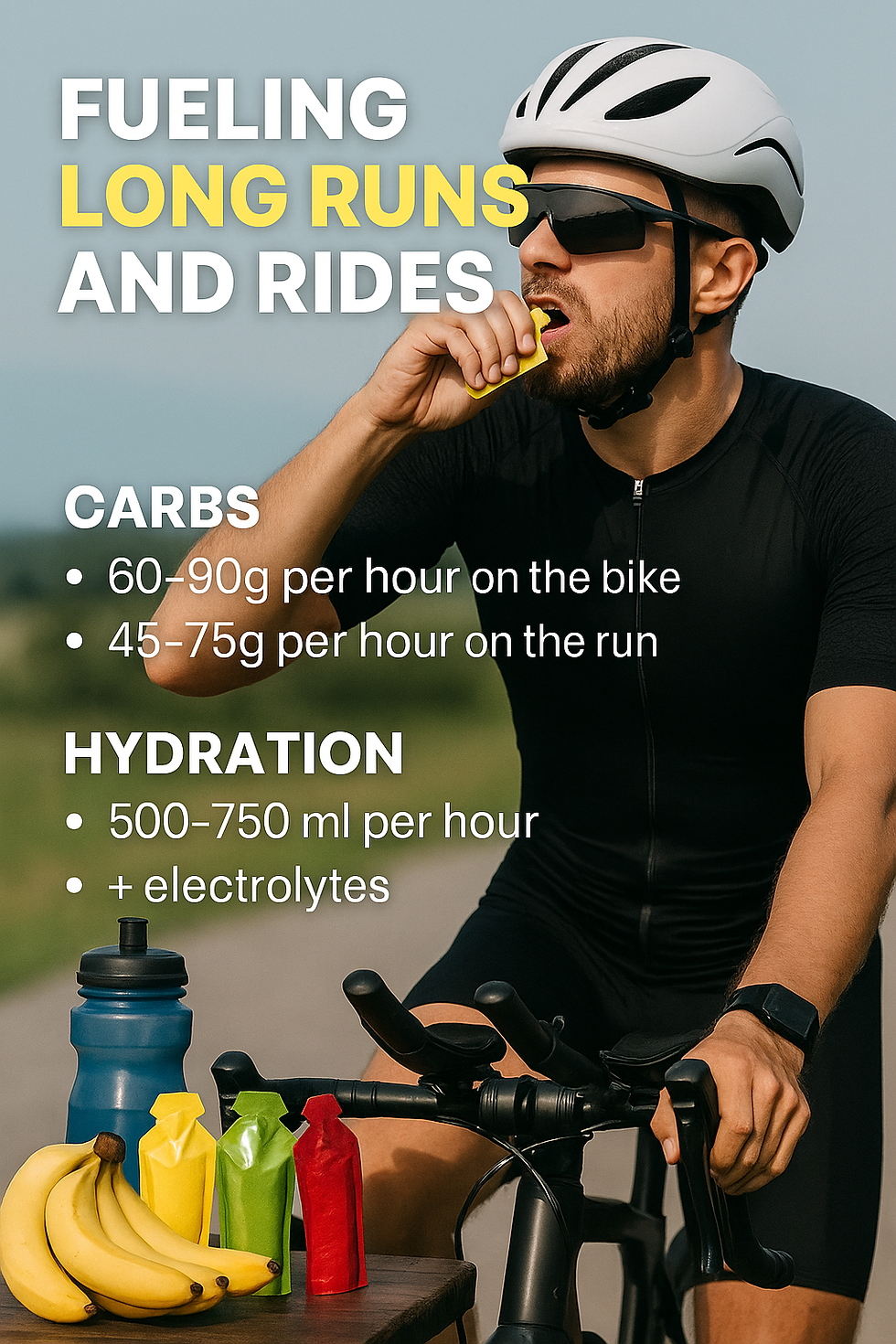Recovery: The Most Overlooked Part of Triathlon Training
- TriWise Coach
- Nov 7
- 3 min read
When triathletes think about improvement, most focus on training harder — longer rides, faster runs, more swim sets.But what if the real gains happen between workouts?
Welcome to the hidden side of performance: recovery.
At TriWise, we believe recovery isn’t a reward — it’s part of the plan.Understanding how and when to recover is what separates athletes who thrive from those who burn out.
Why Recovery Matters More Than You Think
Training is a form of stress. Every swim, bike, and run session breaks down muscle fibers, taxes your cardiovascular system, and drains your energy stores.
Improvement happens not during training, but after — when your body repairs, adapts, and rebuilds stronger.
When recovery is neglected, fatigue accumulates, performance plateaus, and injuries become more likely. When recovery is prioritized, training becomes sustainable, motivation stays high, and progress accelerates.
The Science of Recovery
Every training session creates microdamage in your muscles and challenges your central nervous system.During recovery, the body replenishes glycogen, repairs muscle tissue, and adapts to handle future stress better — this process is called supercompensation.
But if you don’t allow enough time for recovery, you fall into the overtraining trap — where you’re constantly tired, flat, and frustrated.
Simply put:
Train hard + recover smart = improvement. Train hard + recover poorly = stagnation or breakdown.
Types of Recovery
1. Active RecoveryLow-intensity movement that promotes blood flow and healing without adding fatigue.
Examples: Easy Zone 1 ride, relaxed swim, gentle yoga
Best used: The day after a long or intense session
2. Passive RecoveryComplete rest that lets the body fully recharge.
Examples: Rest day, nap, light stretching
Best used: After races, high-load training weeks, or signs of deep fatigue
3. Functional RecoveryThe small daily habits that keep your recovery system firing.
Nutrition: Refill glycogen and protein within 30–60 minutes post-workout
Sleep: 7–9 hours of quality sleep is the most powerful recovery tool
Hydration: Replace fluids and electrolytes
Mobility: Stretching or foam rolling to maintain range of motion
How Recovery Fits Into Smart Triathlon Training
Great triathlon programs aren’t built around how much you train — they’re built around how well you recover.
At TriWise, our training plans automatically balance training stress and recovery time using both AI analysis and coach expertise.
Our approach includes:
Adaptive rest days based on training load and fatigue patterns
Recovery-focused microcycles (every 3–4 weeks)
Taper strategies that maximize freshness for race day
Personalized guidance on sleep, fueling, and active recovery routines
This keeps athletes consistent — and consistency is where long-term success is built.
5 Signs You’re Not Recovering Enough
Your easy sessions don’t feel easy anymore
You’re not sleeping well, even when tired
Resting heart rate is elevated or HRV is down
You’re losing motivation or feel irritable
Small aches and pains are becoming constant companions
If any of these sound familiar, it’s not a sign of weakness — it’s your body asking for a break.
How to Build Recovery Into Your Plan
Schedule one full rest day each week
Keep 80% of training in Zones 1–2 to manage fatigue
Take a lighter week every 3–4 weeks
Fuel properly — especially post-workout
Protect your sleep like it’s your next race
And remember: recovery is not “doing nothing.” It’s the process that makes all your hard work pay off.
The TriWise Difference
Our athletes train with purpose — and rest with intent.
Using AI insights, your TriWise plan monitors cumulative load, recovery patterns, and adaptation. Then, our coaches fine-tune it to your lifestyle, work schedule, and race goals.
The result?Faster recovery. Fewer injuries. Better results.
Ready to Train — and Recover — Smarter?
Start your personalized TriWise AI + Coach training plan today.Learn how to balance effort and recovery so every session moves you closer to your next breakthrough.



Comments